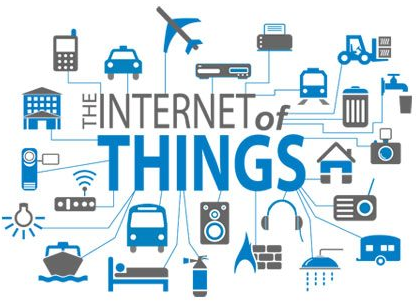Virtual reality (VR) and the Internet of Things (IoT) are two areas of tech that seem to be taking us closer to the realm of sci-fi (in a good way, not a dystopian one!). It’s pretty cool to consider the possibilities of walking through a virtual world or having our environment respond to us through smart technology.
While recent technological advances mean the recreational applications are increasingly limited by our imagination, there’s also commercial potential for these technologies. How exactly they will play a part in business is still to be seen, but it’s exciting to be able to experiment with this tech first-hand to find out.
What is IoT?
For the uninitiated, IoT is the network of physical objects embedded with electronics software, sensors and network connectivity that enables these objects to collect and exchange data through the cloud. This technology has the potential to save businesses and individuals a lot of time and money, alongside making life more convenient and cool.
We’ve already see some ways IoT can positively impact our lives in Jersey with the introduction of the Bus Tracker App. Thanks to sensors in the buses automatically feeding data to a purpose-built platform, islanders and tourists can track the exact location of their bus and know how long they’ll be waiting.
Another example of IoT benefiting islanders is the real-time monitoring of car parks, which shows motorists where there is space (and where there isn’t).
When we consider the full implications of this kind of technology, it’s feasible that one day there’ll be an app that uses live feeds of data alongside predictive analytics, to advise the quickest route to work given public transport, weather, traffic and the nearest car park with availability.
Alongside this is its potential to radically improve our public life, including helping to identify patterns in pollution hotspots through sensors and understanding how we use space in St Helier to better inform urban planning.
The responsive home
IoT also has some exciting applications for our homes. Thanks to Samsung Smart Things, I can manage a large number of devices in my home from one platform on my smartphone. All door, window, gate and garage locks are wired out and connected to this platform, so I can see at a glance if anything is unlocked – handy for when you’re in a rush.
As everyone has a unique door-code, everyone with access to the app knows who’s in the house at any time. I also get notified via the app if there’s any unusual activity – for example, if a door is unlocked when I wouldn’t expect anyone to be at home.
Through the use of smart light switches and geothermal units, I also use IoT to make sure lights automatically go on when daylight falls to a certain level (and vice versa), and that heating turns on in a way that’s responsive to the environment.
Using this technology doesn’t only ensure that all unnecessary lights and radiators are turned off, it also helps me to see the energy consumption for the house and find ways to be more efficient. This use of IoT could have a wider application for Jersey and beyond, to reduce the amount of energy we’re consuming.
Having a smart home can be more energy efficient but it also makes it a more responsive and dynamic place to be. Using IoT, you can programme in rules to make your environment work for you. While obviously a boon for security, IoT also makes the home environment responsive to each individual in it.
For example, because the house ‘knows’ who’s there thanks to the unique combination they key in to enter, we can programme in certain lights to switch on for them, alongside heating certain areas of the house. You can even make music play in certain rooms depending on who’s there.
Using virtual reality
In terms of VR, we’ve ordered the major headsets HTC Vive, Oculus Rift and Microsoft HoloLens. Of these, Microsoft HoloLens stands out as it creates an augmented environment – you see the real world, but with holograms projected into it.
VR’s quality and affordability have rapidly progressed in the past year alone, giving the technology the potential to add real value to a cross-section of industries, from entertainment and gaming, to construction and even healthcare.
At C5, we’re interested in how we can use VR to make data analytics dynamic. Imagine the end of ‘death by PowerPoint’ and the start of dynamic data à la Minority Report, where Tom Cruise’s character has 3D data visualisation, moving information round, changing variables and shifting focus to fully understand the information in front of him. It’s the ultimate synergy between human intelligence and technological power – and far less likely to send people to sleep.
This application of VR can help us to make sense of complex, interconnected environments, particularly in the financial world. Dynamic data presentation lends itself well to HoloLens, and is something we’re seeing from graduates of the HoloLens Academy 8Ninths, who are developing an augmented reality workstation.
Property development edge
HoloLens is also valuable for looking at the consequences of potential property developments. By overlaying an (as yet) unreal object onto a real environment, we can see what new buildings would genuinely look like in their environment, and make sure that there are no unintended consequences for surrounding buildings/areas.
This would have a positive impact on the Future St Helier project and the new hospital while also providing a commercial bonus for developers.
By accessing the power of VR and IoT, businesses and governments have the possibility to make truly data-driven decisions. By examining every angle of an issue – the anticipated and, more importantly, the unanticipated – we can ensure resources and developments are objectively going in the right direction.


Written by Peter Harrison
|
June 21, 2016